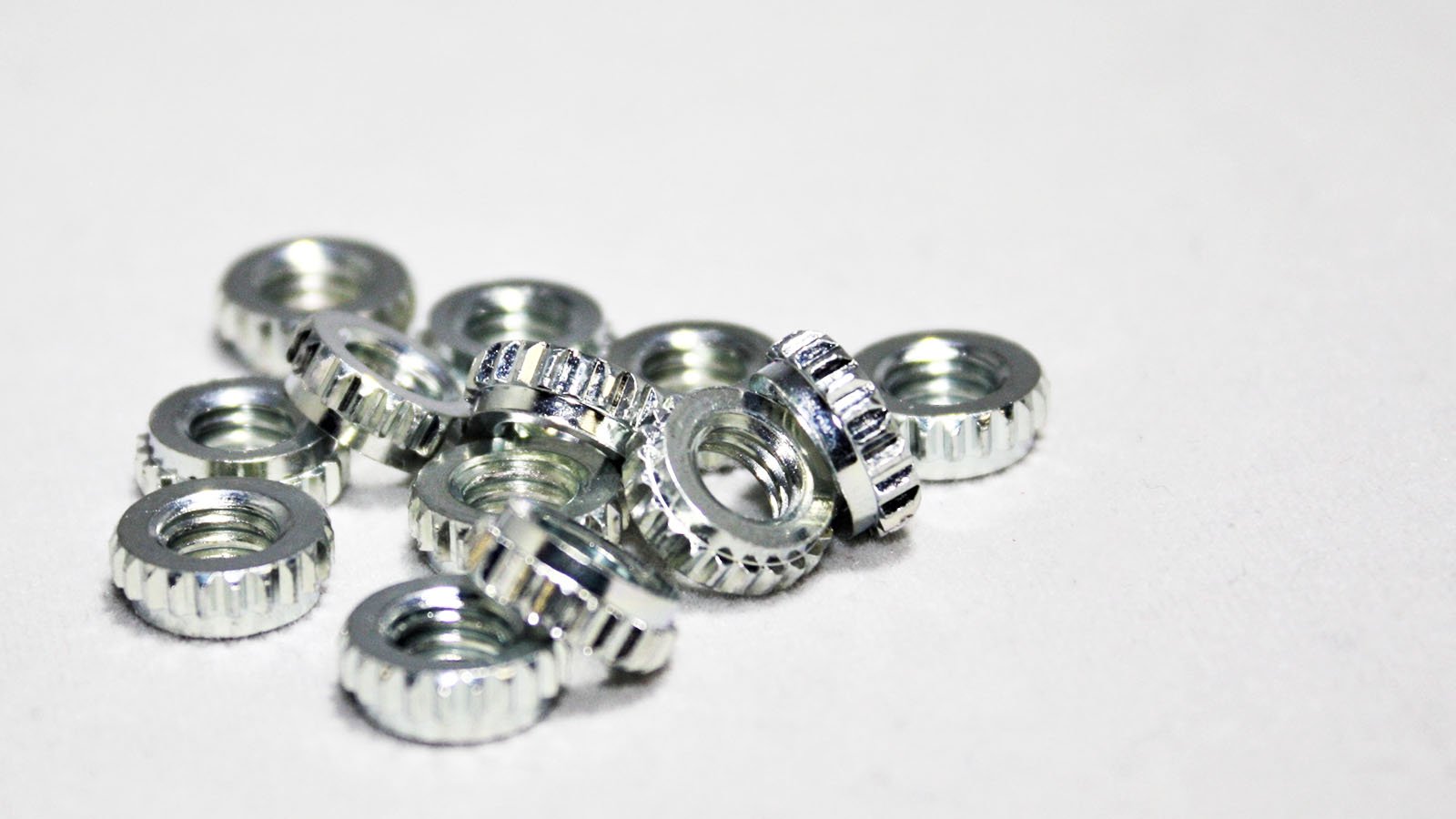Adding inserts to a plastic part can serve various purposes. The most common applications are internally threaded inserts, used to create a strong thread in a molded part. Other applications could include dowels, male threads, hard stops, spacers, or other custom applications. In this article, we will cover the various ways that inserts can be added to an injection molded part. Below you will find the various methods for adding inserts, as well as the advantages and disadvantages of each.
Insert Molding
Insert molding is where the inserts are loaded into an injection mold before the molding process begins. Plastic is then injected around the insert to solidify it into place. The advantage of insert molding is that it does not require any secondary equipment (unlike some of the other methods listed below). The downside is that since the loading operation adds to the molding cycle time, the cost of the part increases slightly. Depending on the application the price increase could be less than manually inserting as part of a post molding operation.
Depending on the level of complication of the part and order volumes, automatic insert loading could be the best option. Automatic insert loading is where a robotics system loads inserts into a mold instead of a machine operator. To see this in action, check out this post where we developed an automatic insert loading system.
See more on Insert Molding…
Ultrasonic
In ultrasonic applications, an operator places the plastic part into a fixture underneath an ultrasonic horn. The operator puts the insert into place and then the horn applies high-frequency vibration and pressure to the insert. The friction created by the vibration heats the plastic and allows the insert to sink into place. Once the insert is in place, the horn holds pressure against the insert (without vibration), allowing the plastic to solidify around the insert. The advantage of ultrasonic is that the plastic component can be molded without the added cycle time of manual loading. The downside is the high cost of ultrasonic equipment and the added time required as a secondary operation.
Thermal
Thermal insertion functions under the same principle as ultrasonic insertion. The difference is that a heated probe is used to heat the insert and the surrounding plastic, instead of the ultrasonic horn. Once the insert is heated and in it’s final position, the heated probe is removed to allow the area to cool and solidify around the insert. Unlike the ultrasonic system where pressure is held while cooling takes place, the heated probe is backed off to allow cooling. However, not holding pressure on the insert during cooling may allow the insert to back out slightly as it cools. Compared to ultrasonic, thermal is a more cost-effective but slower way to add inserts to a molded part.
Cold Insertion
Cold insertion is done by pressing an insert into a cold plastic part. Of the different options, cold insertions are the most cost-effective and simple way to add an insert. The downsides are that the plastic part could crack or fatigue, and the overall strength of the insert is significantly diminished.


